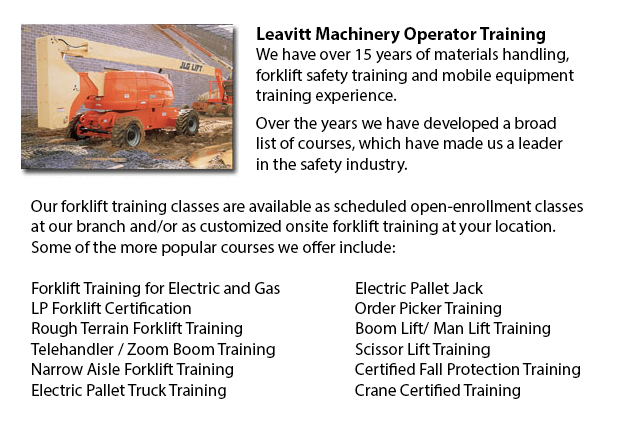
Aerial Lift Certification Burlington - Aerial Lift Certification is for workers who require a thorough knowledge of aerial lift safety. Maintenance workers, construction craftsmen and supervisors need this training to make sure that inspectors and operators are qualified. Federal, provincial and state regulations need companies to be certified to be able to perform in-house aerial lift inspections.
Regardless of differences in the kind of work being done, all workers who perform tasks at elevated levels normally use the same means to access the needed height. Aerial lifts and scissor lifts are the mechanized devices made use of in order to lift equipment and workers to elevated places.
Bucket trucks called Cherry Pickers are aerial platforms that feature a bucket and supported boom. The primary danger to using this kind of platform is normally tip-overs, falls and electrocutions. Certification ensures that workers who use aerial lifts are correctly trained in order to safely operate the equipment. Training likewise makes certain that workers know how to maintain aerial work platforms based on the manufacturer's instructions.
Aerial lift training certification programs would cover the following: Aerial lifts that are mounted to vehicles, Boom-supported aerial lifts and scissors lifts. Trainees will learn about safe operating procedures and would gain knowledge about the hazards that normally cause aerial lift incidents. They would be technically competent in the different kinds of aerial lifts, in addition to components and terms. From interpreting rated capacity charts to selecting the right aerial lift for the task, the certification program would provide employees with all that they should know to perform their work safely.
Those who are assigned the job of checking aerial lift devices have to know how to check booms, gears, operating mechanisms, structural components, functions and control systems, braking systems, power plants, pins and shafts, attachments, hydraulic, pneumatic and electric components, operator aids and emergency safety devices, et cetera. Training would consist of the following: the inspector's role in reducing liability exposure and accidents; how to perform a pre-use, monthly and annual inspection; how to apply and interpret rules about aerial lift safety standards; how to write inspection reports; techniques and checklists; inspection procedures; complying with record keeping requirements; applying and understanding the three levels of aerial lift inspection; and when to remove defective aerial lifts from service.
-
Order Picker Training Burlington
Order Picker Training Burlington - Order picker's enables warehouse employees to lift pallets using forks. Also called a stock picker, this particular electrically-powered equipment is similar to a forklift except that an order picker is likewise uti... More -
Crane Certification Burlington
Crane Certification Burlington - The Crane Certification training program includes content recommended by industry regarding the efficient and safe operation of cranes. Trainees would learn the following: how to identify cranes and their component pa... More -
Overhead Crane Training Burlington
Overhead Crane Training Burlington - The overhead crane is a piece of equipment which can lift and move huge, heavy objects which can't be handled by hands. Typically, overhead cranes are fixed in place. These equipment are capable of moving huge vol... More -
Aerial Lift / Boom Lift / Man Lift / Scissor Lift Training in Burlington
Lift tables or scissor lifts could elevate both people and goods vertically. They are normally used in construction, commercial and industrial environments. Commonly, the use of a scissor lift is to lift and lower supplies from one floor of a job loc... More -
Telehandler Operator Training Burlington
Telehandler Operator Training Burlington - Telescopic Handler forklifts or telehandler forklifts are usually found on construction places and their popularity continues to rise. The versatility of telehandler forklifts ensures that they are a valuabl... More -
Forklift Training Classes Burlington
Forklift Training Classes Burlington - Forklift are heavy pieces of industrial machines that are made use of in transporting and the handling of merchandise and materials. They are often known as Lift trucks and are found in all sorts of businesses.... More -
Boom Lift Training Burlington
Boom Lift Training Burlington - Aerial platforms or also known as elevated work platforms are devices that allow workers to perform tasks and duties at elevated heights that would not be otherwise accessible. There are a variety of aerial lifts avail... More -
Bucket Truck Training Burlington
Bucket Truck Training Burlington - The Vehicle-Mounted Aerial Work Platform or also called bucket truck training program is intended to decrease the risk of incident and personal injury while working in close proximity or with bucket trucks by effici... More

Forklift Training Burlington
TOLL FREE: 1-888-254-6157
Burlington, Ontario
forklifttrainingburlington.com
Email Us
About Us


